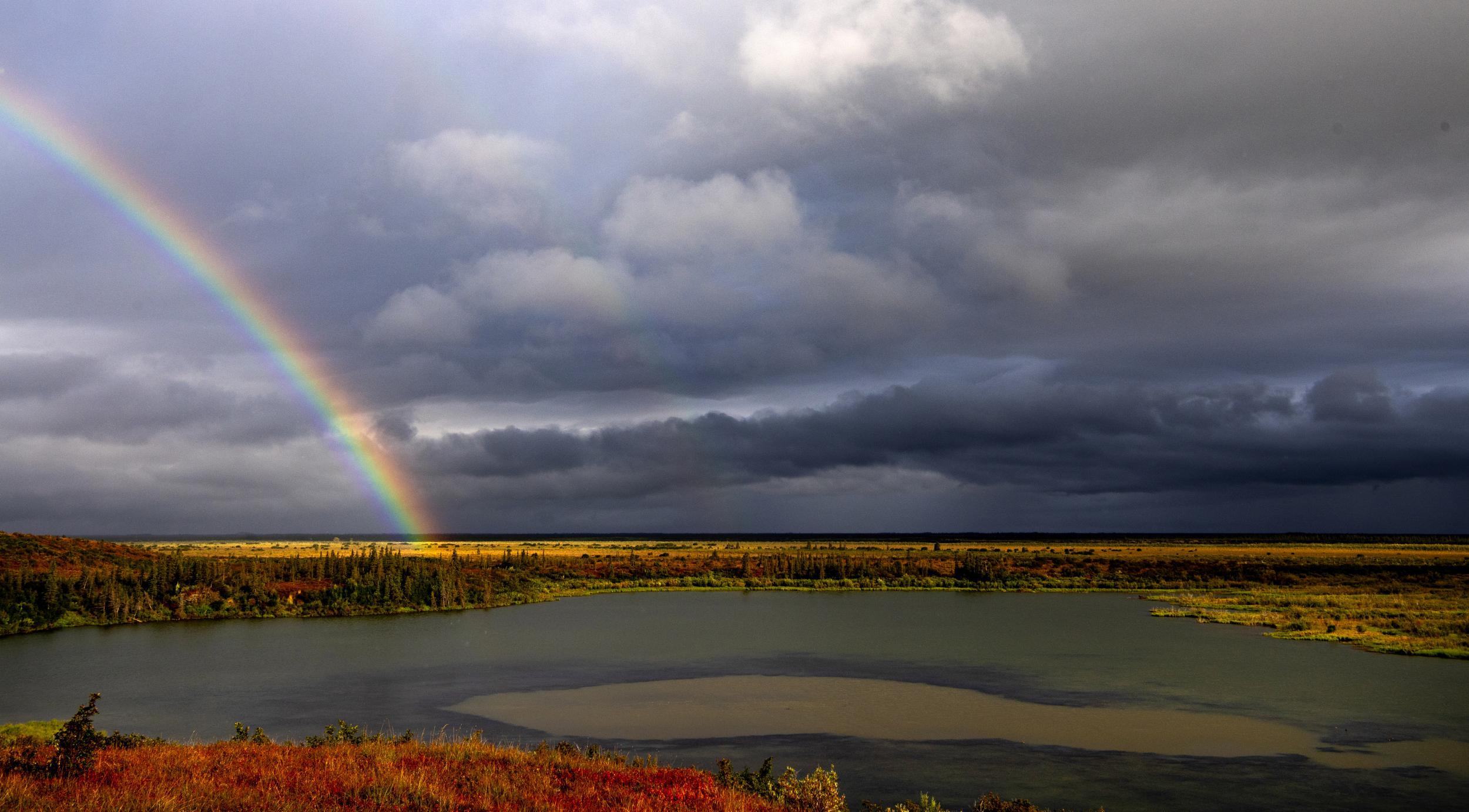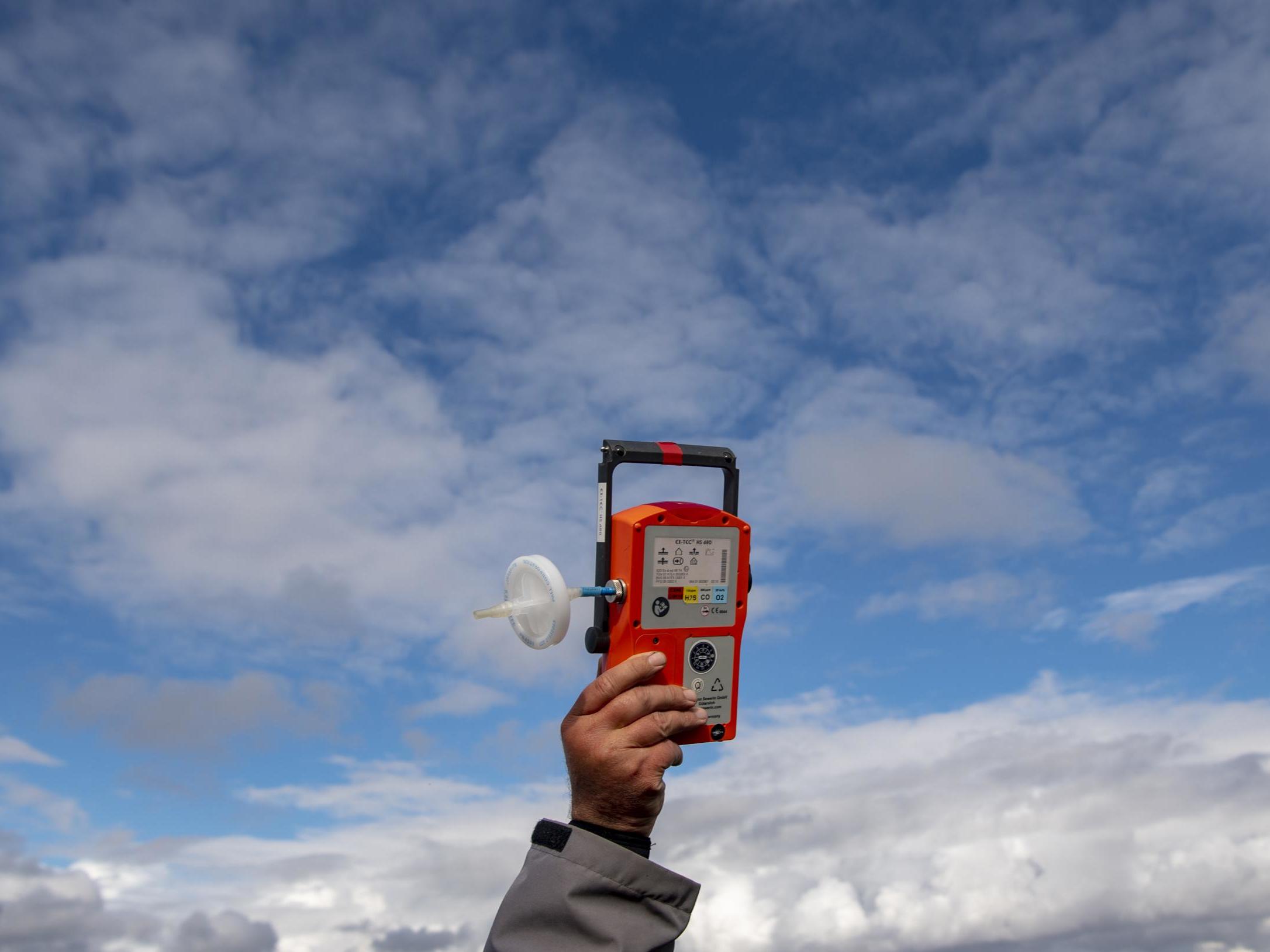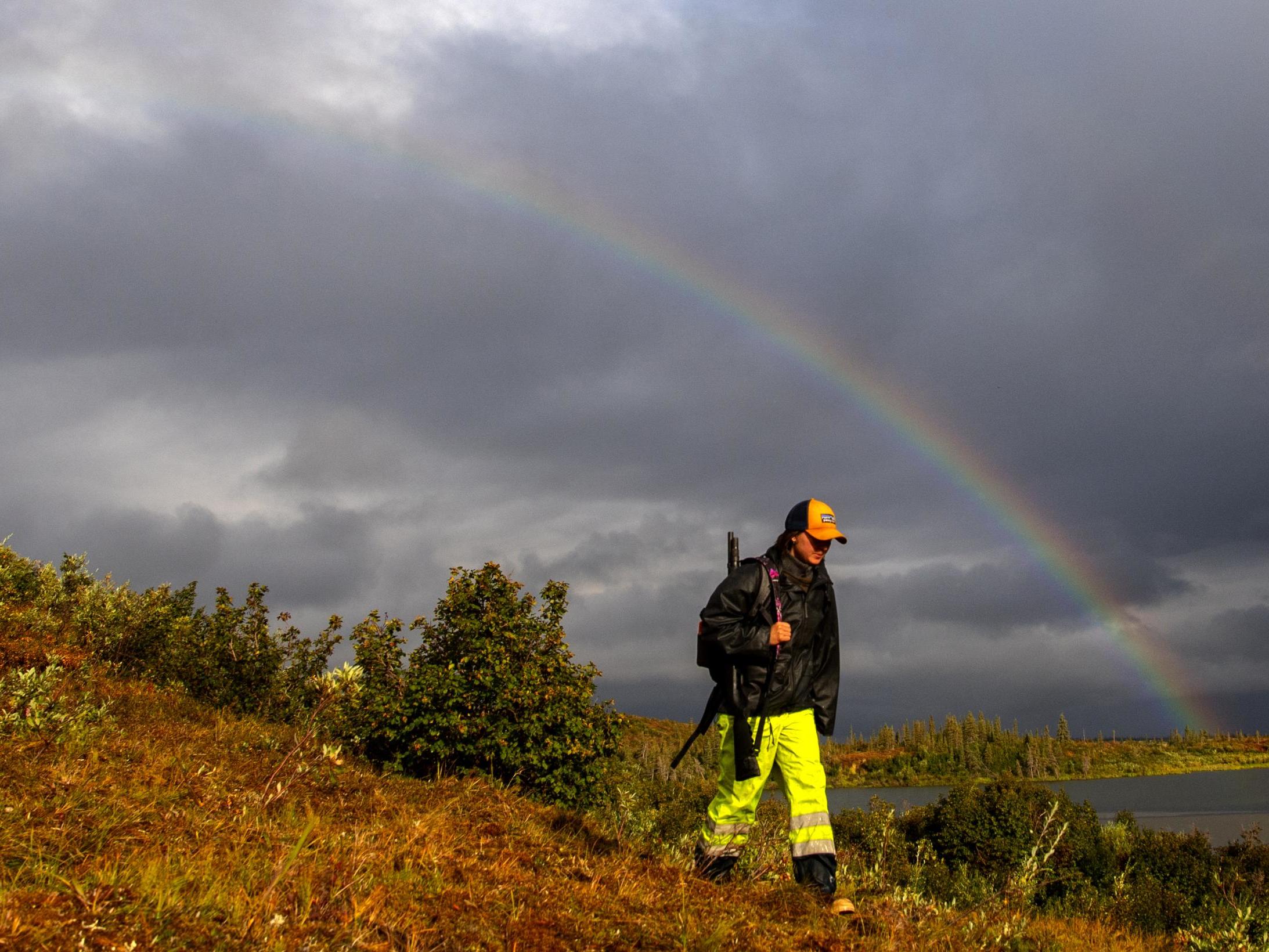The Thawing Arctic
"These lakes speed up permafrost thaw. It's an acceleration."
"I love the solitude of remote lakes and the mystery of what lies beneath the water surface."
"You’re just looking down into this stream of bubbles coming up right into your face, and they’re so soft they go all around you. And the sunlight’s on them. It’s like out of this world but under this world."
Katey Walter Anthony, aquatic ecologist, Arctic expert, University of Alaska, Fairbanks
"It’s kind of freaky. [Diving into the under 60 degree Wow 2 waters, in wetsuit and snorkel, feeling his way around the scant visibility].
"Right where the hole goes in, it slopes, and it’s flattened out, and it coned back down, and that was where some really loose sediment was, and I could stick my hands into it."
Philip Hanke, research assistant
 |
| Methane gas released from seep holes at the bottom of Esieh Lake send ripples to the surface. (Jonathan Newton/Washington Post) |
As the Arctic continues to warm, permafrost begins to thaw, releasing carbon dioxide from soil to air. The thaws spur the growth of lakes in the sunken ground and these bodies of water have a tendency to unleash the gas known as methane from decomposing, ancient deposits of plant material. This lake, to the scientist, looked different than those she had become familiar with in her research, and she named it Esieh Lake. It was the volume of gas being produced that captivated her interest.
When she first saw the lake and witnessed the activity on its surface, the thought occurred that it might explode. The very thought of a methane-induced explosion was one that would reduce anyone knowing its potential to instant fear. She once took a video and posted it in 2010 of herself standing on the frozen surface of an Arctic lake, lighting a methane stream on fire as a tower of flame resulted whooshing over her own height.
She returned in August of this year with a small research team to further explore the possible secrets within Esieh Lake; whether what she had witnessed was an anomaly or a sign that the Arctic as it thawed had initiated a serious release of methane from an ancient source that might conceivably aggravate climate change. If the warming Arctic releases increasing amounts of planetary heating methane ... more warming could ensue.
She had been tasked by a Native Alaskan group, the NANA Regional Corporation, to search for seeps of methane gas in northwest Alaska, hoping to be able to take advantage of its presence as a source of fuel to benefit remote communities. In the course of that search she studied some 300 lakes across the Arctic tundra. In 2017 Walter Anthony sent a message to residents of KIotzebue, Alaska of her search for unusual lakes whose surface was unfrozen.
A pilot responded, leading her to the Noatak region, a near distance above the Arctic Circle, and last September her first visit to the lake took place, so remote days of camping are required to finally reach it. Once her initial fear elicited by the sight and potential of all that gas dissipated, her scientific mind took control as she grew more comfortable with the constant spluttering of the lake.
 |
| A rainbow shines over Esieh Lake, with the seep field of methane gas visible in the centre. (Jonathan Newton/Washington Post) |
Sounding devices identified huge holes at the lake's bottom. Esieh Lake is shallow, averaging about a metre deep. However, the gas bubbles cluster indicate a floor beneath that suddenly drops, a plunge so deep all visible signs of plant life vanish and measurements indicate the lake dips to about 15 metres in one area and close to 4.5 metres in another. Those seep clusters were named W1 and W2.
When the scientific team examined samples of the gas in the laboratory they identified the chemical signature of a "geological" origin. The methane venting out of the lake emerged from a reservoir of far older fossil fuels than would be the case if direct thawing of frozen Arctic soil represented its source. The extrapolation seemed clear enough; should fossil fuels buried for thousands of years now be exposed to the atmosphere, the situation would represent a clear risk of greater warming threat.
As a result of the unremitting Arctic cold, carbon-rich remains of countless generations of vegetation that died and sank below the surface of the Arctic where permafrost soils can reach depths of 1,500 metres were preserved for tens of thousands of years if not more. The research team examined the presence of thermokarst lakes, formed when wedges of ice within permafrost melt to create voids that fill with water.
 |
| Frederic Thalasso, of the Center for Research and Advanced Studies at the National Polytechnic Institute in Mexico, uses a gas analyzer at Esieh Lake. (Jonathan Newton/Washington Post) |
 |
| Graduate student Janelle Sharp who accompanied researcher Katey Walter Anthony to Esieh Lake. The team brought shotguns as protection against grizzly bears, which frequent the area. (Jonathan Newton/Washington Post) |
Labels: Arctic, Climate Change, Permafrost, Research, Thaw

0 Comments:
Post a Comment
<< Home